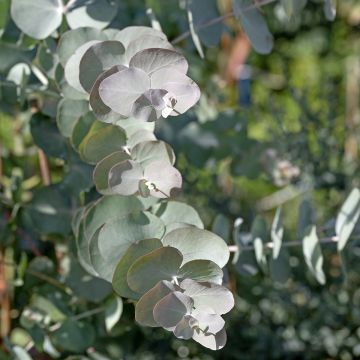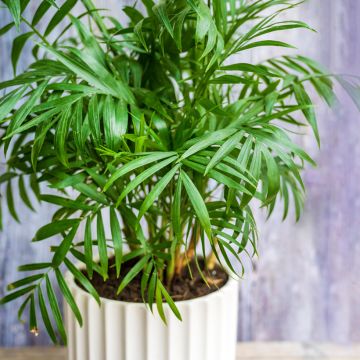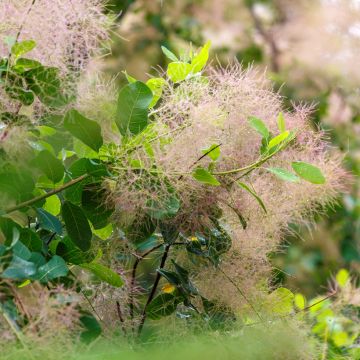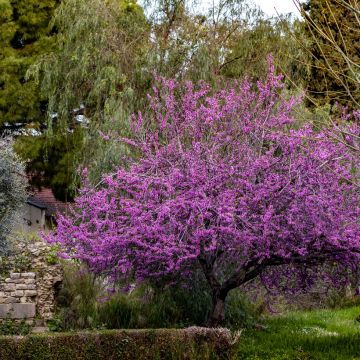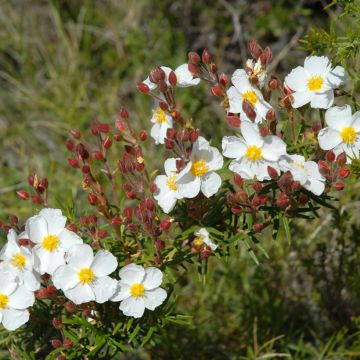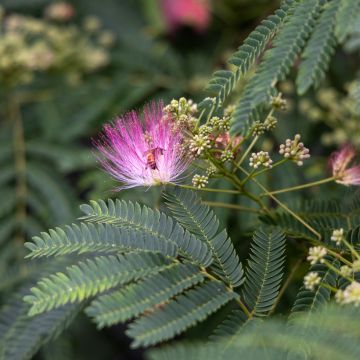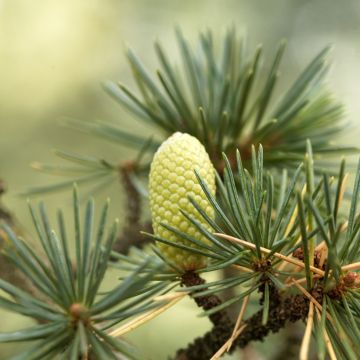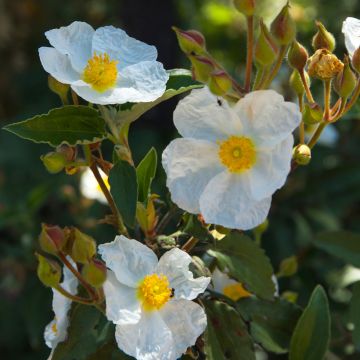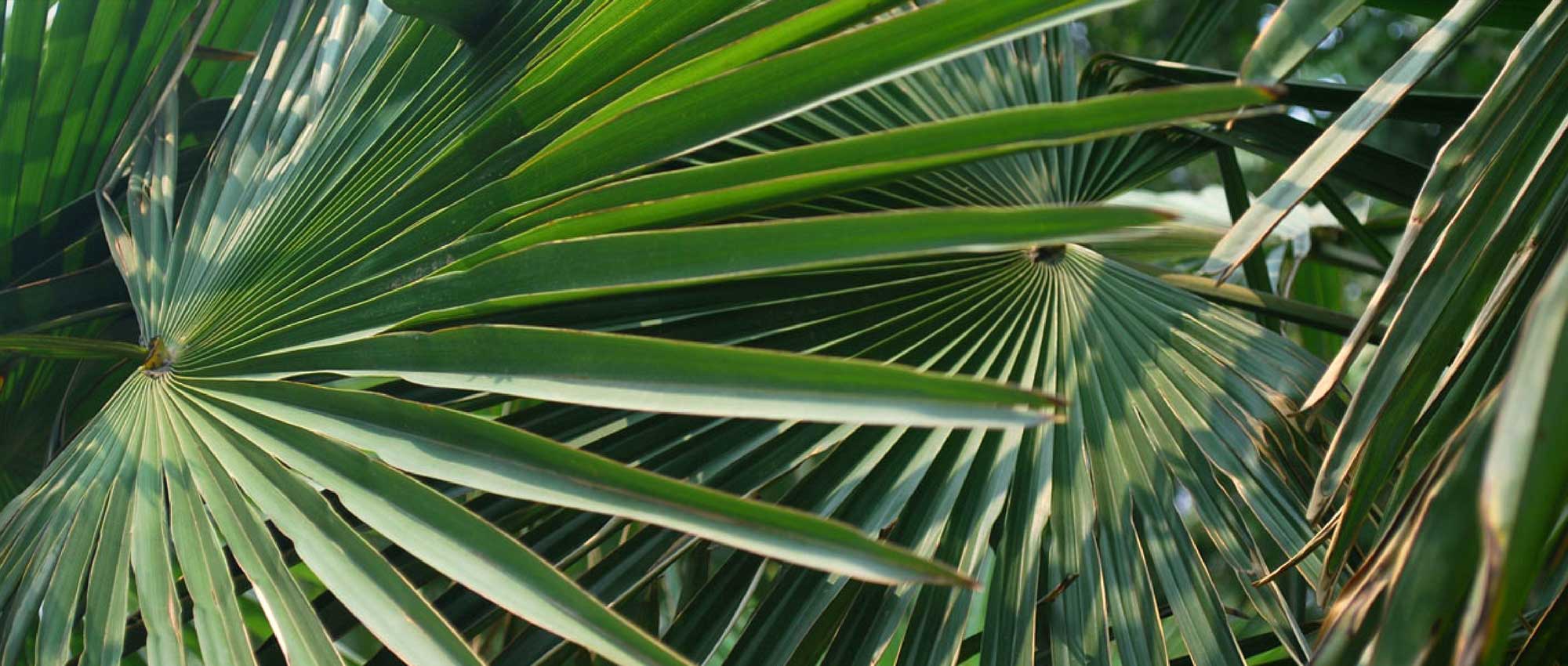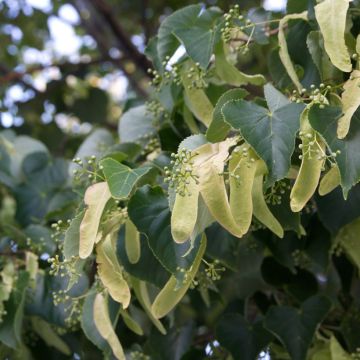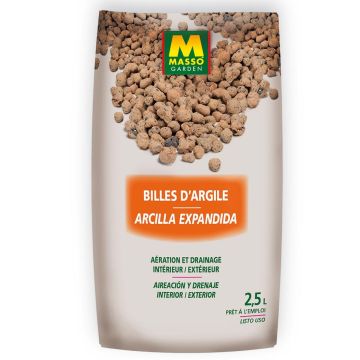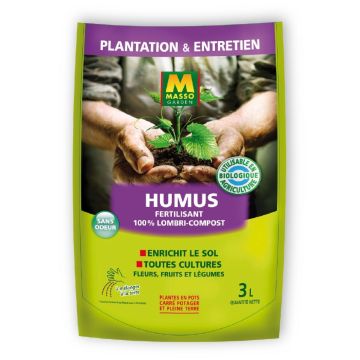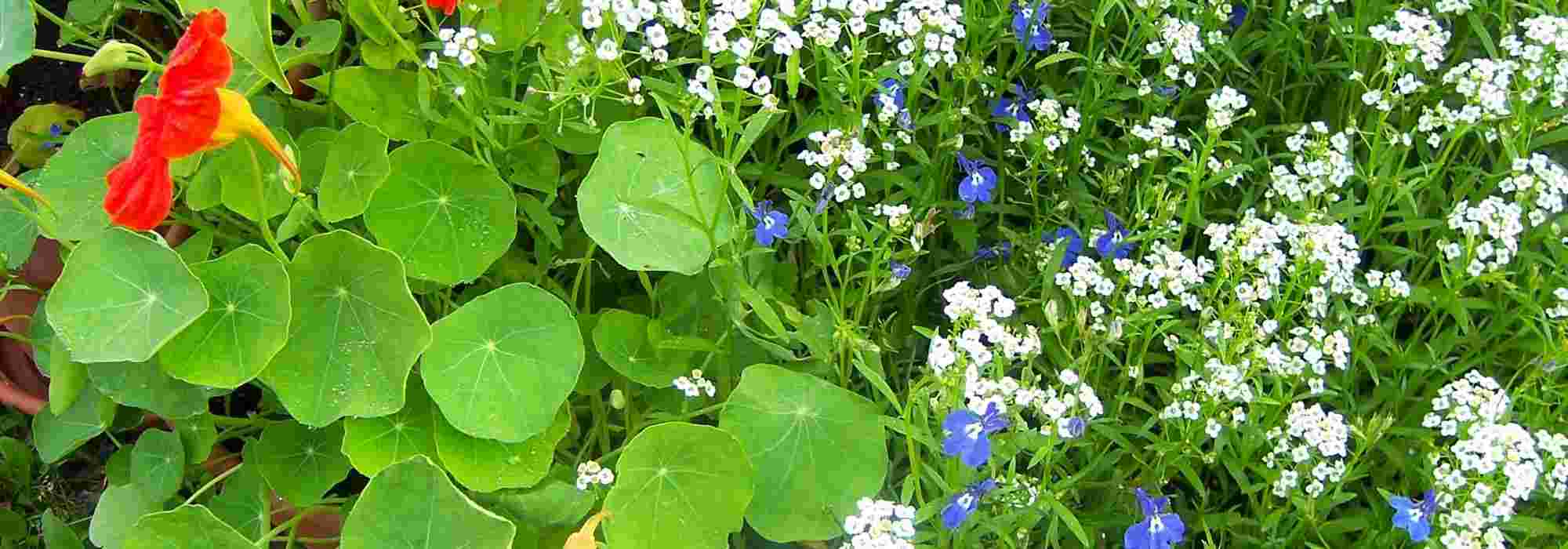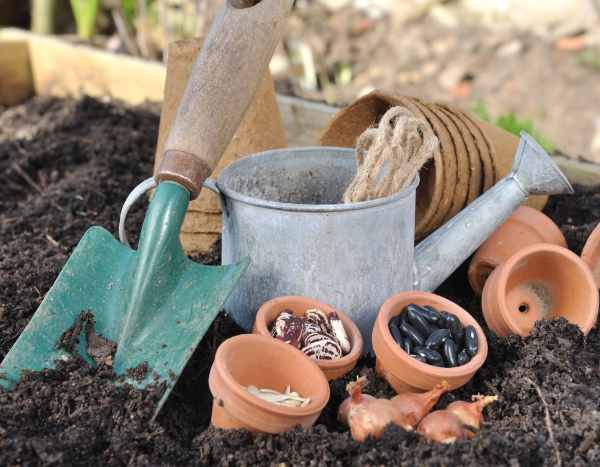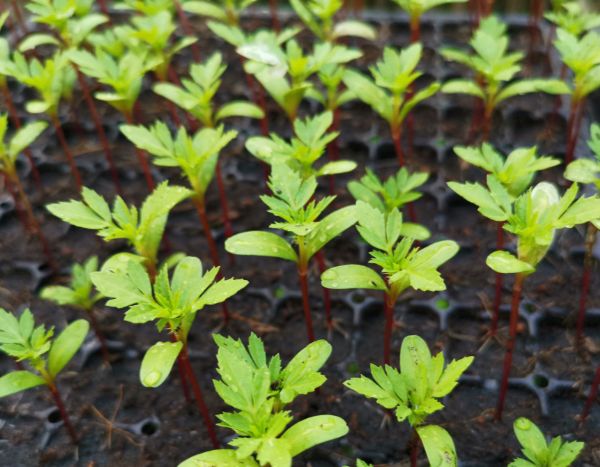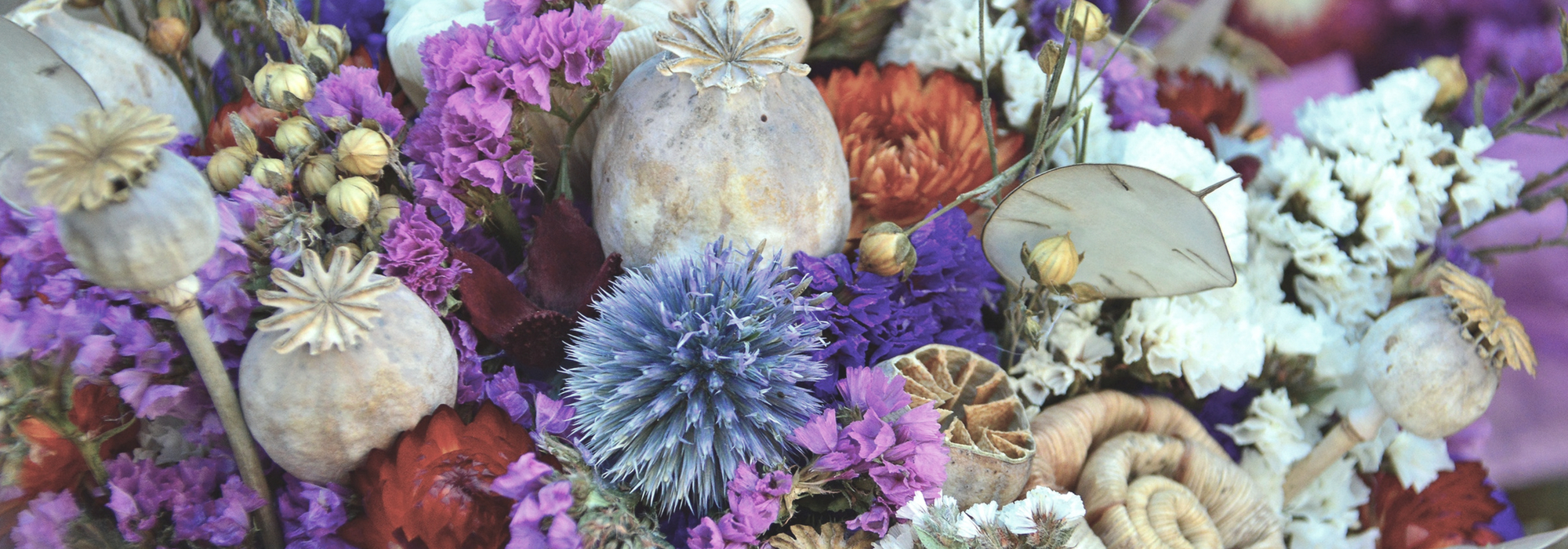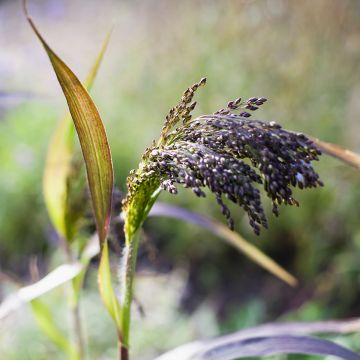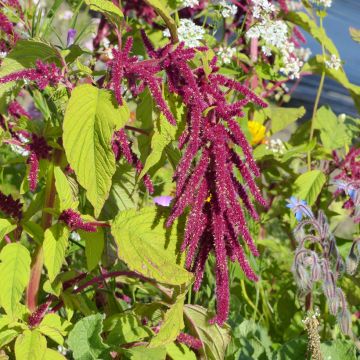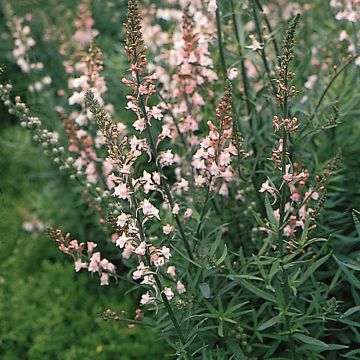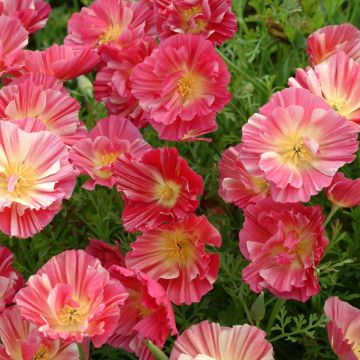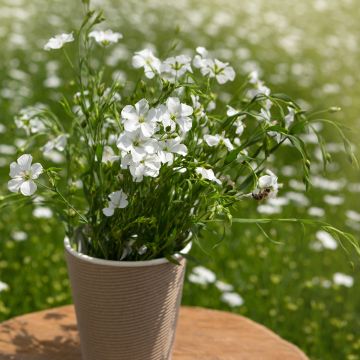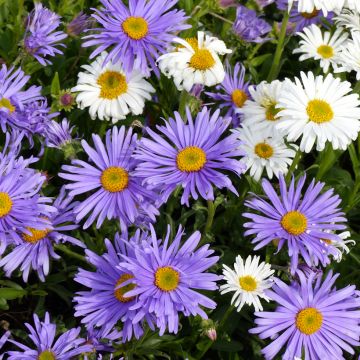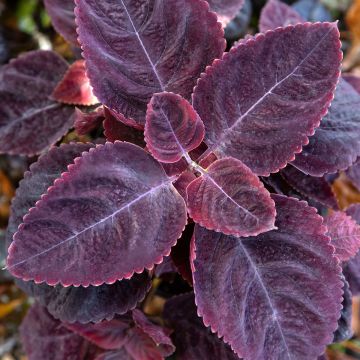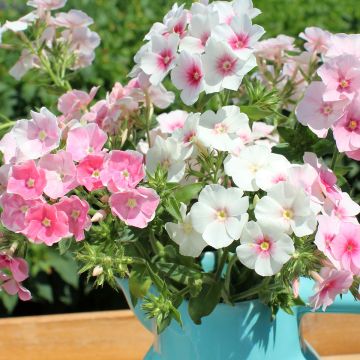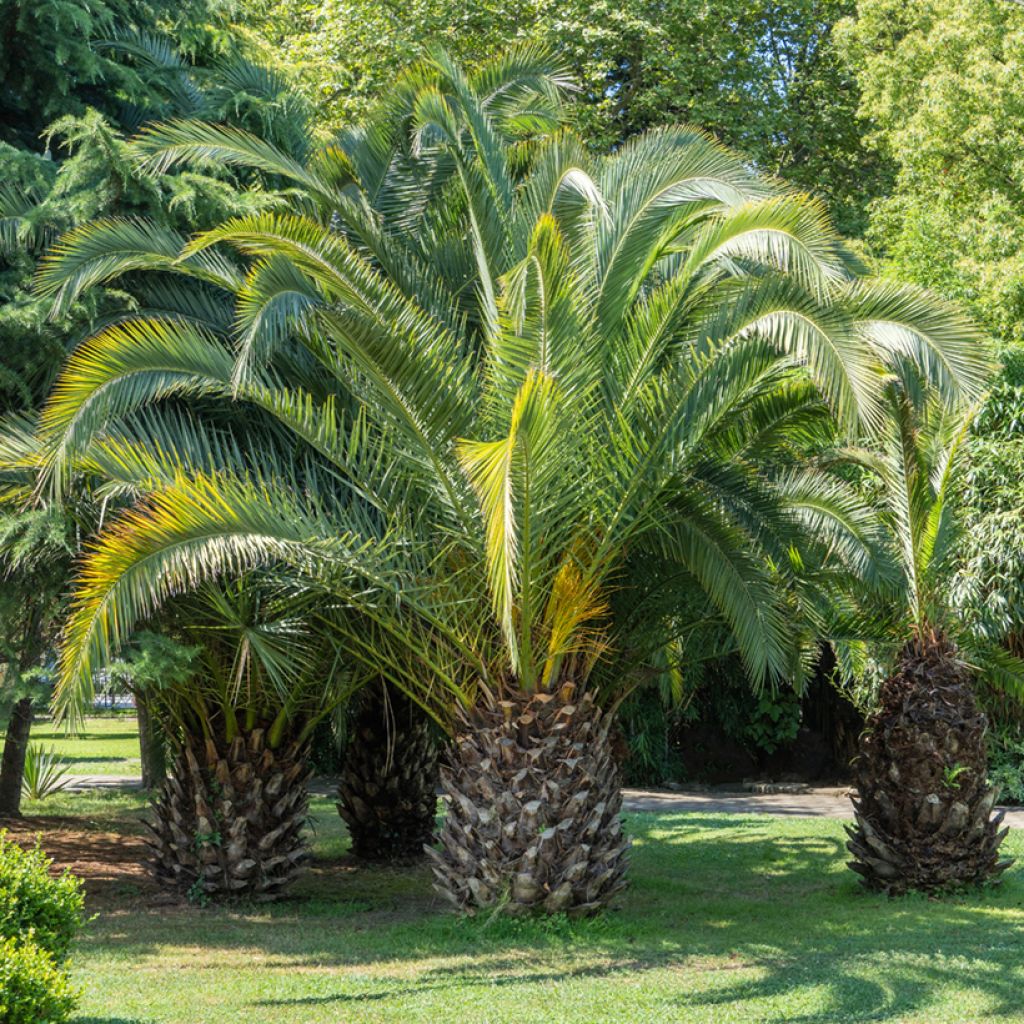

Butia capitata seeds - Jelly palm
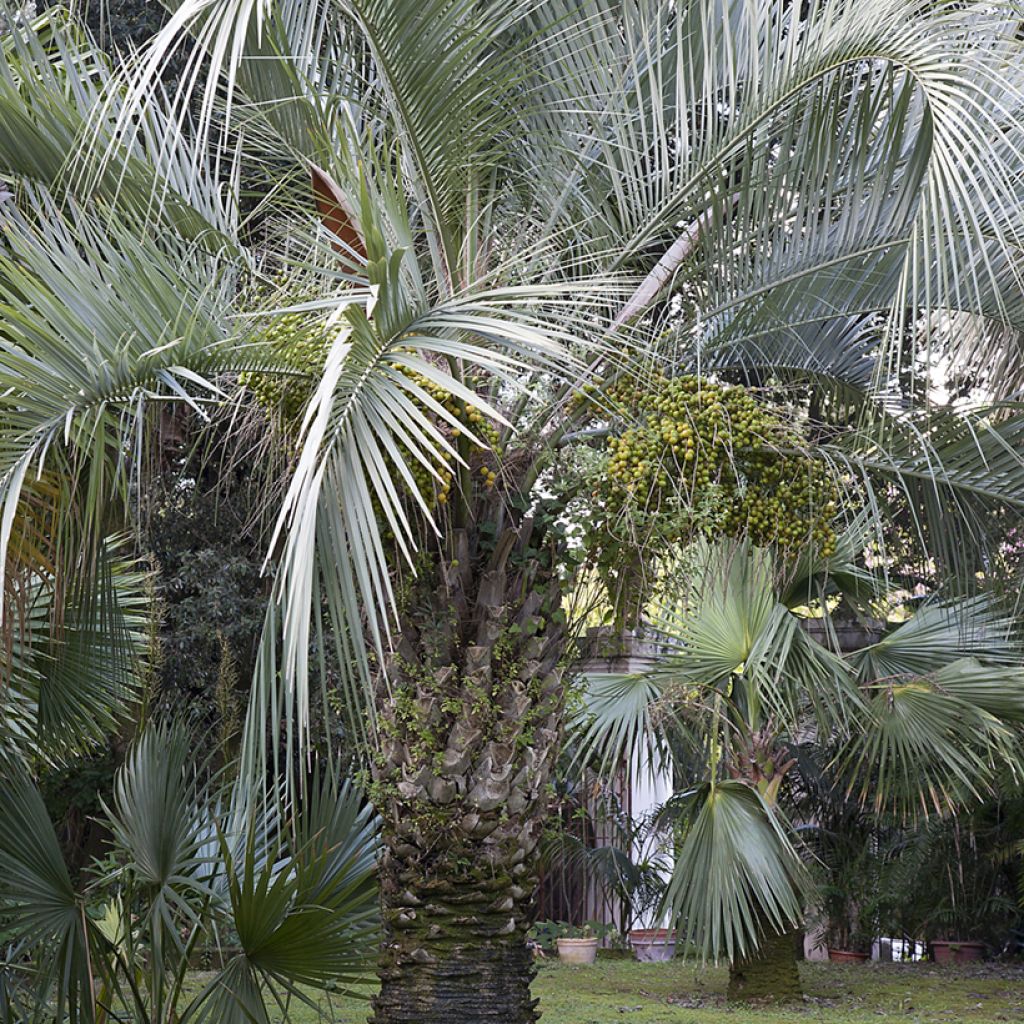

Butia capitata seeds - Jelly palm
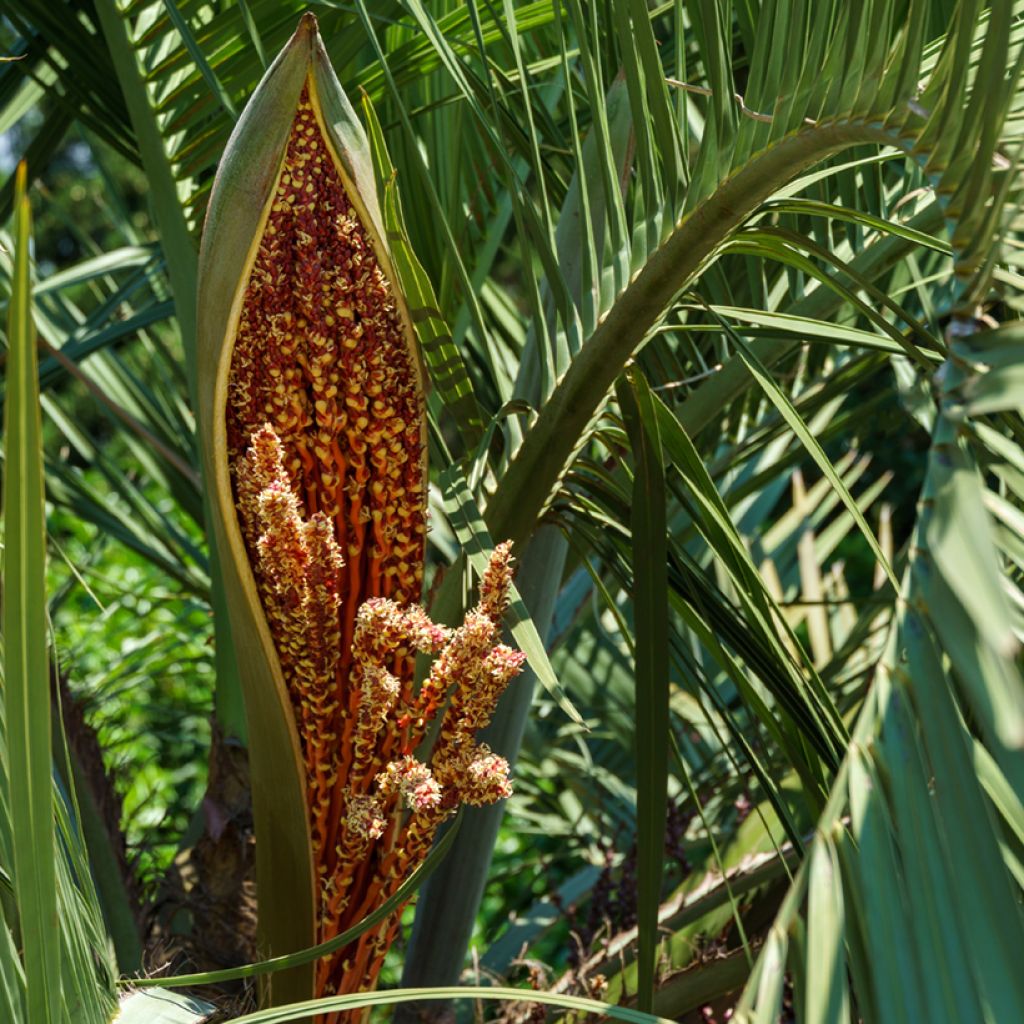

Butia capitata seeds - Jelly palm
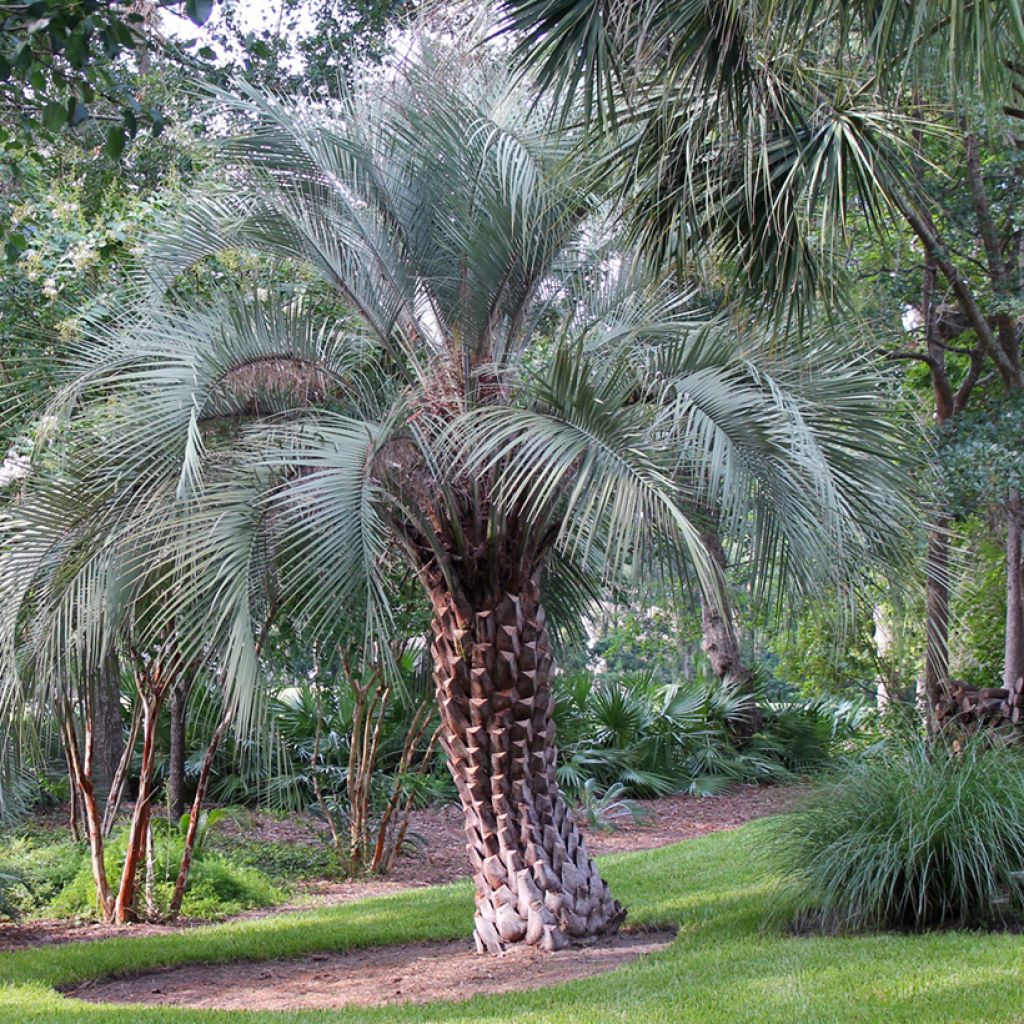

Butia capitata seeds - Jelly palm
Butia capitata seeds - Jelly palm
Butia capitata
Jelly palm
Special offer!
Receive a €20 voucher for any order over €90 (excluding delivery costs, credit notes, and plastic-free options)!
1- Add your favorite plants to your cart.
2- Once you have reached €90, confirm your order (you can even choose the delivery date!).
3- As soon as your order is shipped, you will receive an email containing your voucher code, valid for 3 months (90 days).
Your voucher is unique and can only be used once, for any order with a minimum value of €20, excluding delivery costs.
Can be combined with other current offers, non-divisible and non-refundable.
Why not try an alternative variety in stock?
View all →This plant carries a 6 months recovery warranty
More information
We guarantee the quality of our plants for a full growing cycle, and will replace at our expense any plant that fails to recover under normal climatic and planting conditions.
Would this plant suit my garden?
Set up your Plantfit profile →
Description
Butia capitata, also known as the Wine Palm, Apricot Palm, Jelly Palm or Vinegar Palm, is an elegant, medium-sized palm tree, undemanding in terms of soil and hardy down to -10/-12°C. It can be grown in the ground in regions where frosts remain moderate. A close relative of the coconut palm, it is cultivated in South America for its sweet fruits, used in the production of the famous palm wine. Its spectacular, yellow, red or purple, pleasantly fragrant flowering appears on sufficiently mature specimens.
Growing Butia capitata from seed requires patience and care. The seeds must be scarified and soaked in warm water for 48 to 72 hours before being placed in a well-drained substrate. Germination is slow and can take several months, even over a year. A warm and humid environment, around 25 to 30°C, will favour their development.
Belonging to the Arecaceae family, Butia capitata is native to southern Brazil and Uruguay. It grows naturally in low-altitude plains and savannas, usually on poor and sandy soils. Its growth is slow during the first years, then gradually accelerates. This species develops a stout, rough and greyish stipe or false trunk, reaching 5 to 6 m in height at maturity, with a diameter of around 50 cm in the oldest specimens. On adult specimens, the bases of old leaves remain attached to the trunk, forming a characteristic pattern. The imposing and dense crown can reach 4 to 5 m in spread and consists of 20 to 35 flexible and trailing leaves, measuring between 2 and 2.5 metres long. Each frond is borne by a robust petiolate, 50 cm to over a metre long, light green and armed with fine curved thorns that should be handled with care. Flowering occurs in summer on specimens aged 10 to 15 years. Large inflorescences emerge between the leaves that can measure up to 1.5 metres, grouping both male and female flowers. They are very fragrant and usually arranged in threes, with one female flower surrounded by two male flowers. Their colour ranges from yellow to red, even dark purple. After pollination, they give way to fleshy, ovoid, orange-red fruits, measuring about 3 cm long and slightly pointed. Their juicy and fibrous pulp offers a flavour reminiscent of pineapple, mirabelle plum or mango. Rich in vitamin C, these fruits are used locally to make jellies, liqueurs and the famous palm wine. Each fruit contains a single seed, protected by a very hard shell, similar to a tiny coconut. These ovoid or triangular seeds measure between 1.5 and 2.5 cm in length. They have three distinct pores, a characteristic of coconut palm fruits, from which a germ can emerge, and sometimes even two young shoots from a single seed.
The Apricot Palm is, along with Trachycarpus fortunei and Jubaea chilensis, one of the easiest palm trees to acclimatise in mild temperate climates. In the ground, it finds its place as a standalone specimen, near a swimming pool, or combined with exotic plants such as banana trees and Yucca rostrata. However, it fully expresses its potential in a Mediterranean-style garden. Although its strong presence sometimes makes it difficult to integrate into a flowerbed, it is possible to plant it in groups of three to create a beautiful landscape effect.
Butia capitata seeds - Jelly palm in pictures
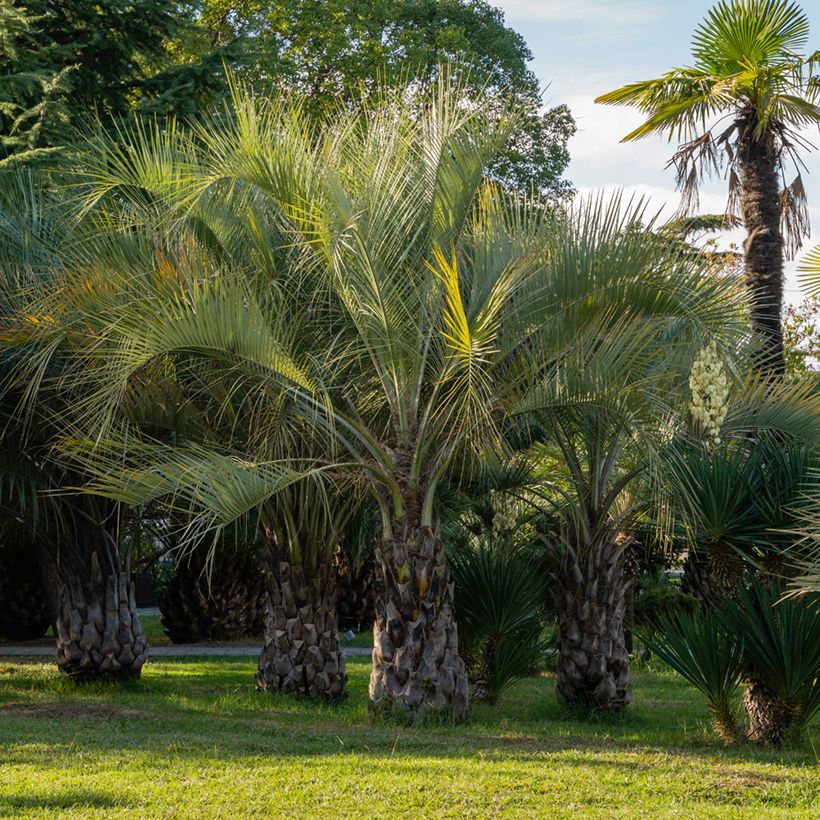

Flowering
Foliage
Plant habit
Botanical data
Butia
capitata
Arecaceae
Jelly palm
Butia capitata var. elegantissima, Butia capitata var. virescens, Butia capitata var. pulposa, Butia capitata var. subglobosa, Cocos australis HORT., Cocos odorata, Cocos capitata, Cocos pulposa, Cocos bonnetii
South America
Other Tree seeds
View all →Planting and care
Sowing: preferably in spring.
The seeds of Butia capitata have a hard shell and contain natural germination inhibitors, which can make the process somewhat lengthy. It is not uncommon for germination to take between 6 months and 2 years. Scarify the seeds to weaken the hard shell, facilitating water penetration and speeding up germination. Use sandpaper, a file, or a sharp knife to lightly scrape the surface of the seed, without piercing the inner coating. After scarification, soak the seeds in lukewarm water for 2-3 days, changing the water daily. Then sow the seeds in a well-draining mix, maintaining a constant temperature of around 25-30°C.
Transplanting: Once your seedlings have developed a few leaves and a strong root system, it’s time to transplant them. Move them into a larger pot or directly into the ground in well-prepared, well-drained soil. Plant the young palms in spring, after the last frosts, to give them time to establish before winter. Water regularly, especially during the first few years, to encourage good root development.
Growing tips: Butia capitata thrives in full sun and tolerates a variety of soils, provided they are well-drained. It is quite hardy, withstanding temperatures down to -12°C once well-established.
In pots, use a mix of loam, compost, and river sand, and ensure good drainage by placing clay pebbles at the bottom of the pot. Water regularly so the soil never dries out completely between waterings.
Sowing period
Intended location
Planting & care advice
This item has not been reviewed yet - be the first to leave a review about it.
Similar products
Haven't found what you were looking for?
Hardiness is the lowest winter temperature a plant can endure without suffering serious damage or even dying. However, hardiness is affected by location (a sheltered area, such as a patio), protection (winter cover) and soil type (hardiness is improved by well-drained soil).

Photo Sharing Terms & Conditions
In order to encourage gardeners to interact and share their experiences, Promesse de fleurs offers various media enabling content to be uploaded onto its Site - in particular via the ‘Photo sharing’ module.
The User agrees to refrain from:
- Posting any content that is illegal, prejudicial, insulting, racist, inciteful to hatred, revisionist, contrary to public decency, that infringes on privacy or on the privacy rights of third parties, in particular the publicity rights of persons and goods, intellectual property rights, or the right to privacy.
- Submitting content on behalf of a third party;
- Impersonate the identity of a third party and/or publish any personal information about a third party;
In general, the User undertakes to refrain from any unethical behaviour.
All Content (in particular text, comments, files, images, photos, videos, creative works, etc.), which may be subject to property or intellectual property rights, image or other private rights, shall remain the property of the User, subject to the limited rights granted by the terms of the licence granted by Promesse de fleurs as stated below. Users are at liberty to publish or not to publish such Content on the Site, notably via the ‘Photo Sharing’ facility, and accept that this Content shall be made public and freely accessible, notably on the Internet.
Users further acknowledge, undertake to have ,and guarantee that they hold all necessary rights and permissions to publish such material on the Site, in particular with regard to the legislation in force pertaining to any privacy, property, intellectual property, image, or contractual rights, or rights of any other nature. By publishing such Content on the Site, Users acknowledge accepting full liability as publishers of the Content within the meaning of the law, and grant Promesse de fleurs, free of charge, an inclusive, worldwide licence for the said Content for the entire duration of its publication, including all reproduction, representation, up/downloading, displaying, performing, transmission, and storage rights.
Users also grant permission for their name to be linked to the Content and accept that this link may not always be made available.
By engaging in posting material, Users consent to their Content becoming automatically accessible on the Internet, in particular on other sites and/or blogs and/or web pages of the Promesse de fleurs site, including in particular social pages and the Promesse de fleurs catalogue.
Users may secure the removal of entrusted content free of charge by issuing a simple request via our contact form.
The flowering period indicated on our website applies to countries and regions located in USDA zone 8 (France, the United Kingdom, Ireland, the Netherlands, etc.)
It will vary according to where you live:
- In zones 9 to 10 (Italy, Spain, Greece, etc.), flowering will occur about 2 to 4 weeks earlier.
- In zones 6 to 7 (Germany, Poland, Slovenia, and lower mountainous regions), flowering will be delayed by 2 to 3 weeks.
- In zone 5 (Central Europe, Scandinavia), blooming will be delayed by 3 to 5 weeks.
In temperate climates, pruning of spring-flowering shrubs (forsythia, spireas, etc.) should be done just after flowering.
Pruning of summer-flowering shrubs (Indian Lilac, Perovskia, etc.) can be done in winter or spring.
In cold regions as well as with frost-sensitive plants, avoid pruning too early when severe frosts may still occur.
The planting period indicated on our website applies to countries and regions located in USDA zone 8 (France, United Kingdom, Ireland, Netherlands).
It will vary according to where you live:
- In Mediterranean zones (Marseille, Madrid, Milan, etc.), autumn and winter are the best planting periods.
- In continental zones (Strasbourg, Munich, Vienna, etc.), delay planting by 2 to 3 weeks in spring and bring it forward by 2 to 4 weeks in autumn.
- In mountainous regions (the Alps, Pyrenees, Carpathians, etc.), it is best to plant in late spring (May-June) or late summer (August-September).
The harvesting period indicated on our website applies to countries and regions in USDA zone 8 (France, England, Ireland, the Netherlands).
In colder areas (Scandinavia, Poland, Austria...) fruit and vegetable harvests are likely to be delayed by 3-4 weeks.
In warmer areas (Italy, Spain, Greece, etc.), harvesting will probably take place earlier, depending on weather conditions.
The sowing periods indicated on our website apply to countries and regions within USDA Zone 8 (France, UK, Ireland, Netherlands).
In colder areas (Scandinavia, Poland, Austria...), delay any outdoor sowing by 3-4 weeks, or sow under glass.
In warmer climes (Italy, Spain, Greece, etc.), bring outdoor sowing forward by a few weeks.































